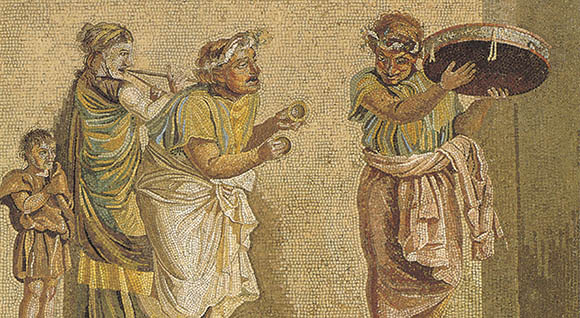6. Acoustics

The Greeks were already aware of the direct relationship between sounds and emitted vibrations. This knowledge formed the basis for the principles and criteria they used to build theatres with considerable acoustic properties.
Numbers were used to explain the physical difference between sounds: Pythagoras was the first to establish a precise mathematical relationship between the pitch of a sound and the length of a vibrating cord, thereby creating the harmonic scale.
Musical instruments were based on the harmonic scale, and were used in Pompeii to accompany the important events of people's lives. Music was an integral part of social activities, marking the rhythms of rituals, games, war, triumph, and death.
Romans assimilated the Platonic concept of music as a precisely mathematic science, one endowed in addition with great moral value, a concept that Boethius later stressed. For this reason music was essential in religious rites, theatrical performances, and festivals.
In religion music assumed symbolic significance associated with the cult of the dead, the myth of Bacchus, and that of the siren, who was portrayed in the oldest representations as a bird of prey and not as a mermaid.
In the theatre music accompanied the masks of tragedy and comedy, the procession of musicians, and the representation of Apollo who was the protector of musicians.
There was also music for festivals, played during banquets and during the games. Strongly linked to music was dance, which was also present in rites, in theatre and in festivals. In dance the sacred and profane were mixed, and characters linked with various myths, such as maenads, sileni, and centaurs, appeared.
There were wind, percussion, and stringed instruments.
- Provenance: Pompeii, so-called Villa of Cicero
- Date: End of second century BC - First Style


